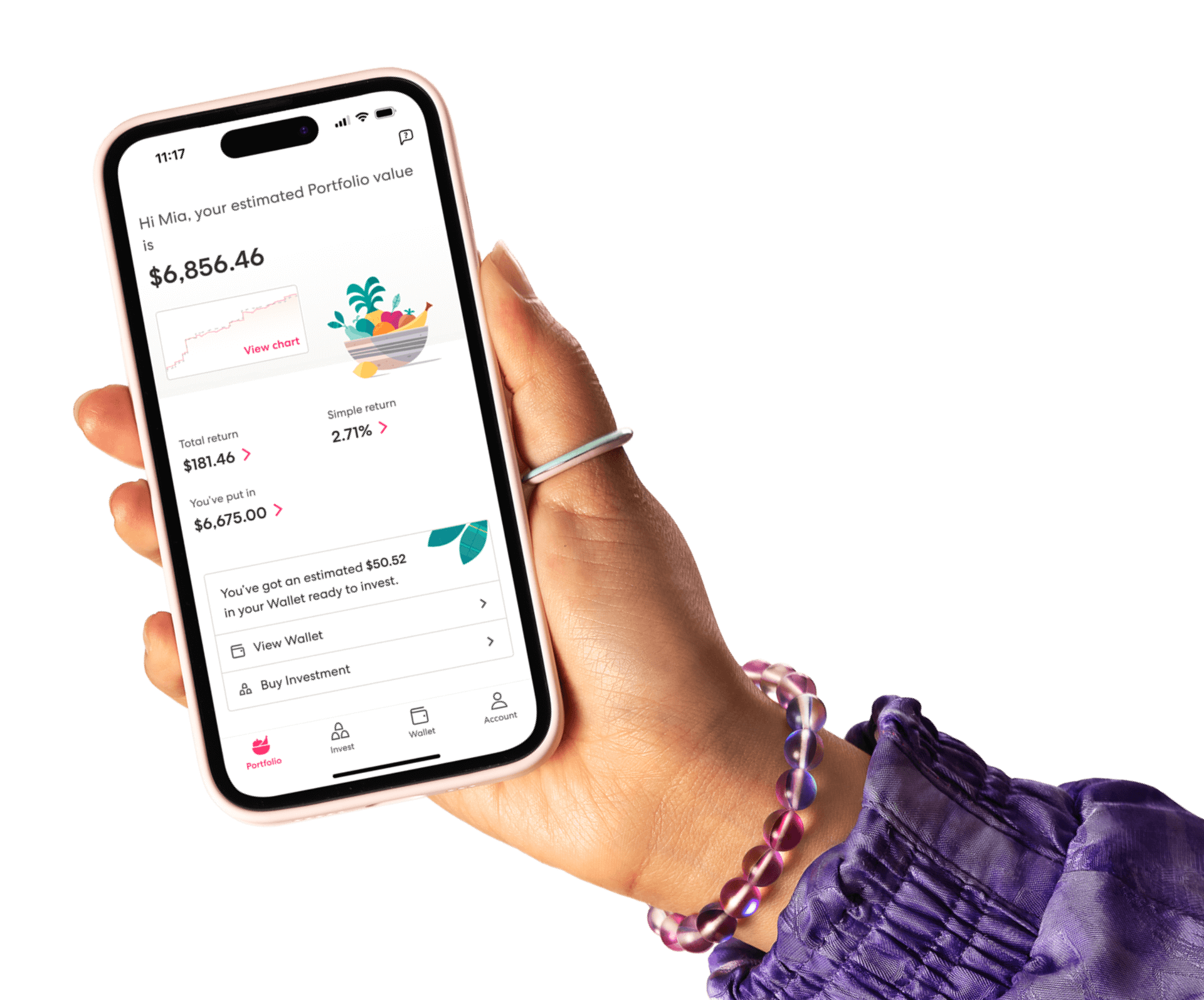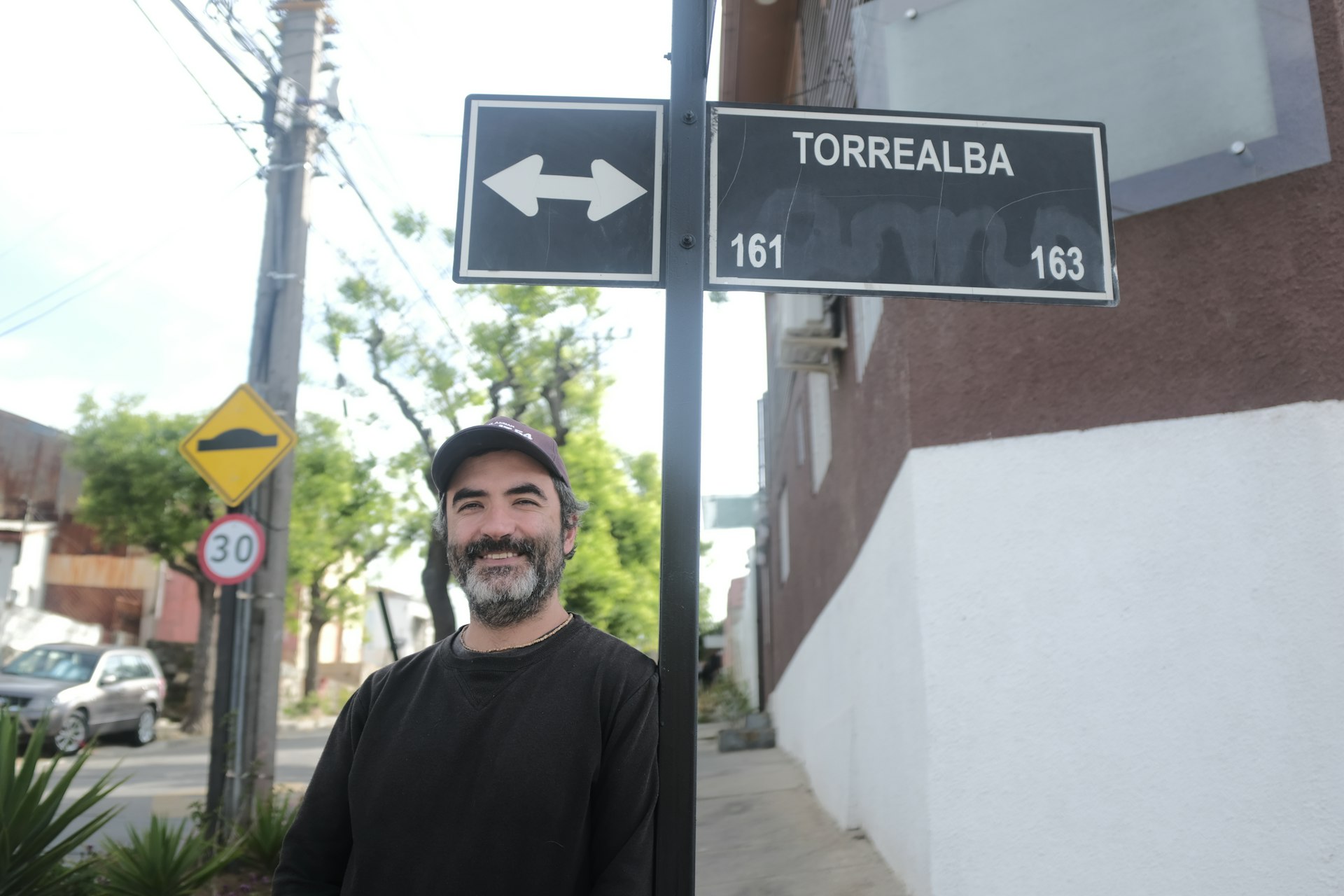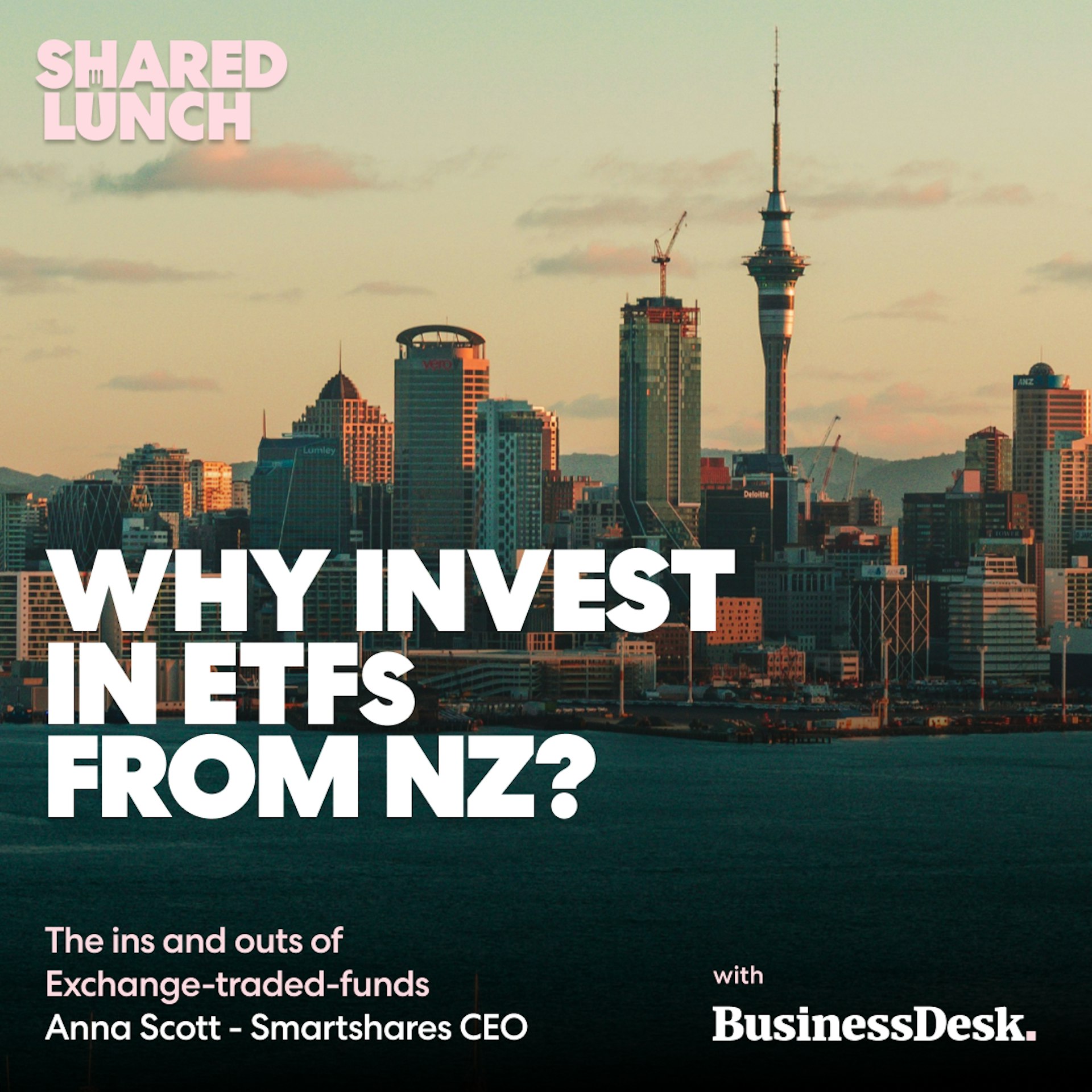How to invest online
Twenty or so years ago, investing (like many things!) had a lot more barriers than it does now. If you wanted to buy shares, you had to call your broker, or go to their office. Things moved at a slower pace, they cost more, and they were more difficult!

Fast forward to now, and investing has moved from a brick-and-mortar activity to something you can do online, from anywhere.
Whether you’re a beginner investor, an experienced investor, or something in between, it’s worth looking into buying shares online, buying bonds, opening bank accounts online, or even investing in property online!
This post will answer questions like:
How do you buy shares in a company?
Why invest online?
What are the different types of investments?
... and more. Read on!
What are the different types of investments?
Let’s start with the different types of investments you can make. There are all kinds of options out there, such as:
Putting your money in a bank account, like a savings account or term deposit.
Buying shares in companies.
Investing in exchange-traded funds (ETFs), which are shares that are traded on an exchange and invest in lots of different things, based on certain criteria.
Investing in managed funds, which are shares that are traded through a fund manager in things like shares, bonds, and other products.
Buying property, like a house to live in, or a house to rent out to someone else. Or even building a house on a plot of land, then selling it to someone else!
Every investment choice you make has three main elements:
How much risk are you taking?
How liquid is the investment?
How diversified are you?
Risk is the likelihood that your investment won’t give you the return you expect it to get. For example, your savings account that pays 1.5% interest per year is fairly low risk.
Liquidity is how easy it is to turn your investment back into cash. That same bank account is very liquid—you could transfer money out of your savings account in thirty seconds, and start spending it immediately. Compare that to investing in something like a house. A house is not very liquid at all. To turn it into cash, you’d have to either sell it or get your bank to loan you money against it. The latter option takes time, and costs money, while the former option takes less time, but also costs you in interest.
Finally, diversification is how spread out your investment is. If all your money is in one bank account, you are not very diversified. But if you invest your money in 500 different shares, you are very diversified.
When looking at individual investments, it’s useful to look at them in terms of risk and liquidity. In general, to get higher returns, you need to take more risk, have less liquidity, or both.
Savings accounts
Let’s start with a basic investment—a savings account. You’re probably familiar with this. You put some money in your savings account, and the bank pays you interest, based on how much money you have in there.
You can generally take your money out whenever you want, and the risk of not getting the advertised interest rate is pretty low. Since you have lots of liquidity and low risk, the returns tend to be pretty low...around one percentage point per year, or less!
Term deposits
Term deposits are the next step up from a savings account. When you open a term deposit with the bank, you usually get paid a little bit more interest than a regular savings account would pay you. However, in exchange for that, you agree to lock up your money for a certain amount of time. This could be six months, a year, two years—all the way up to five years!
This means a term deposit is less liquid than a regular savings account. If you put your money in a 12-month term deposit, then want to withdraw it after 9 months, you’ll usually have to pay a break fee. But since it’s with a bank, you’re not taking any more risk than you would in a regular savings account. The only cost is the liquidity.
You can see this in action by looking at term deposit rates. As you can see, banks will pay you more if you’re willing to wait longer and invest more. $100,000 invested for 5 years pays you a higher interest rate than $10,000 invested for 2 years. This is a great way to see the effect of liquidity on your investments.
Bonds
Bonds are what big organisations, like corporations or governments, use to borrow money. Individuals and smaller organisations can borrow money from the bank. But big organisations often need to borrow a lot more than any one bank would be willing to lend them. Maybe $100m or more!
Rather than borrow money from one organisation, like a bank, they issue bonds. A bond is essentially a piece of paper that entitles the person who owns it to regular interest payments from the organisation that issued the bond.
So a big corporation could issue 1,000,000 bonds for $10 each, with an agreement to pay $1 per year, per bond, for 30 years. That would give the organisation $10m, in exchange for $1m per year to the people who bought their bonds.
If you bought one of those bonds, you wouldn’t have to hold onto it for the entire 30 years. You could sell it if you wanted to. And over time, as things change, you may be able to sell it for more than the $10 you paid for it—or you may have to sell it for less. The price will go up and down, depending on how badly people want the $1 per year. The more they want it, the more they’ll pay for it, and vice versa.
Bonds tend to be reasonably low risk, as they come with certainty of regular payments. There is always the chance that an organisation may default on its payments, and stop making them, but this is pretty rare, because it would make it very hard for the organisation to borrow money again in the future. What’s more, if you own a bond for five years, and the organisation defaults in the sixth year, you still got five years of payments. This offsets your risk.
They’re also quite liquid. They’re less liquid than a regular bank account, but more liquid than a term deposit. If you want to turn your bonds into cash, all you need to do is sell them. Most bonds tend to change hands multiple times per day, so it’s usually not too hard to find a buyer if you want to sell. You just need to indicate that you want to sell, and how much you want to sell for, and if there’s a buyer at that price, you’ll get your money in a couple days.
Property
Property is another way to invest your money. Property is not a very liquid investment at all, for the reasons we mentioned above. However, when it comes to risk, property is a lot less cut-and-dried than other investments, like term deposits.
The amount of risk you take when you invest in property depends on a lot of factors to do with the specific property you’re investing in, rather than property in general. If the property is in good shape, then there’s less risk of having to pay large amounts of money for something like a new roof. If it’s in a desirable area, there’s less risk of it losing value over time. If you’re living in it, you don’t have to deal with the risks of tenants not paying rent, or messing up the place.
The list goes on. So if you’re thinking of investing in property, make sure you look at the specific factors of the house or apartment you’re investing in, because those are the factors that will determine how risky your investment is.
There is a way to invest in property online without having to think too much about specifics of individual properties—we’ll get into that in a minute.
Shares
Shares are what lots of people think of when they think of investing, but as you can see, they’re just one of many ways to invest. A share is just that—a small ownership “share” of a company. If a company issues 100 shares, and you buy one of them, then congratulations! You own 1% of that company.
Shares either give you a share of the income a company makes (called dividends), or they increase in value because the company grows, and you make money when you sell. More often, it’s a combination of the two.
The main thing that separates shares from bonds and bank accounts is that there’s no explicit agreement to pay you a specific amount. Rather, your returns are tied to the company you’ve invested in. If the company does well, then your shares will become more valuable and/or you’ll get some solid dividends. If the company doesn’t do so well, then your shares won’t increase in value as much—in fact, they may go backwards!
So this lack of certainty means shares are a bit more risky than other investments. But the tradeoff is that you get access to potentially higher returns than other investments. If you buy some bonds issued by a company, that company pays you the same amount, regardless of how well it does. If you buy some shares, you get more money if the company does better.
Shares are also about as liquid as bonds. They’re a bit less liquid than a bank account, but you can usually turn them into cash in a day or two. They’re similar to bonds in that you need to find a seller in order to turn your shares into cash. With most shares, this is pretty straightforward, because there are lots of buyers and sellers at any given moment—but some shares aren’t bought and sold as often, so you may need to wait a little longer, or drop your price to sell in these circumstances.
Exchange-traded funds (ETFs) and managed funds
ETFs and managed funds are investments that pool your money with other investors, then buy lots of different things. This could be a collection of shares, bonds, or even a bunch of different bank accounts. In fact, there are even ETFs and managed funds that focus on property! So you could be a property investor without having to invest in a specific property.
ETFs and managed funds may be high or low risk, depending on what they invest in. But one of the great things about them is that there’s very little risk of them losing value entirely, forever. That’s because they are highly diversified, which means they invest in lots of different things. If you invest a dollar in an ETF or managed fund, that dollar gets spread out across dozens or hundreds of different investments. In total, these investments may lose value in the short term, but they’re unlikely to lose value in the long term, because there’s so many of them.
ETFs and managed funds vary in their liquidity. You can easily turn your money into cash if you’ve invested in an ETF or managed fund, but it’s possible for these investments to lose value in the short term. So if you invest in an ETF or managed fund, and it drops in value, you can turn it into cash—but at the cost of “locking in” your loss.
KiwiSaver
KiwiSaver is similar to ETFs and managed funds. KiwiSaver providers collect savings from customers, then invest those savings in a range of different things. Generally, you can choose from three to five different approaches—from low risk, very conservative funds that don’t grow very much, but also rarely lose value, to very aggressive funds that grow over time, but may go up and down in value in the short term.
There are a couple special things about KiwiSaver that you should know about:
You can contribute certain percentages of your salary: 3%, 4%, 6%, 8% or 10%.
If you contribute 3%, your employer has to match another 3%—but your employer doesn’t have to match higher amounts.
On top of this, the government matches your contributions—they’ll give you $521 per year, as long as you contribute $1042 per year.
The tradeoff of KiwiSaver is that you sacrifice a lot of liquidity. You can only turn your KiwiSaver into cash in limited circumstances:
You turn 65
You buy your first home
You are under severe financial hardship
You leave the country forever
But the upside is “free” money from both your employer and the government—not a bad deal!
This means that if you’re young, it’s generally smart to invest your KiwiSaver in the riskiest option available. You won’t be able to touch that money for years, so any short-term fluctuations don’t really matter.
How do I invest in shares?
Now that we’ve covered the main investments available, let’s take a closer look at investing in shares.
When you invest in shares, your money doesn’t actually go to the company you’re investing in. Rather, you’re usually buying shares from another investor who is selling shares. Your money goes to that person, and you get the shares.
This all happens on a stock exchange. In NZ, our main stock exchange is called the New Zealand Stock Exchange (NZX). When you buy shares, you tell the exchange how many shares you want, and what you’re willing to pay for them. At the same time, someone else is telling the exchange how many shares they want to sell, and what they’re willing to take for them.
A deal goes through when these two figures match. For example, you may want 10 shares, and you’re willing to pay up to $20 for each share. Someone else may be selling 10 shares, and they’re willing to accept $10 for them. Since they’re willing to accept $10 for each share, the deal goes through! You paid $10 for your shares when you were willing to pay $20—congrats! The shares are now listed as being worth $10, as that’s the last price that was paid for them.
This happens a zillion times an hour, which gives everyone a really good idea of what the market is valuing shares at.
But when you buy shares, you don’t necessarily have to go through this process. In fact, you can’t! It would be too much of a pain for the NZX to handle all the transactions of every single person who wants to buy and sell. So instead, they outsource this to third-party organisations called NZX participants. You go to one of these organisations, tell them what you want to buy or sell, and they go and take care of it on your behalf.
There are a few ways to do this:
Call a broker and have them place an order for you
Buy shares through Sharesies—or set up a regular auto-invest order
Set up a trading account through your bank
Investments you can buy with Sharesies
You can use Sharesies to invest in companies, exchange-traded funds (ETFs) and managed funds.
Company shares
When you buy shares in companies, you get exactly that—a small piece of a company. If it issues dividends, you get them, and if it gains value, you can sell your shares for more than you paid for them.
Investing in companies is great for anyone who wants to put together and test their own investment approach. You may have some ideas of your own, or specific expertise that gives you an edge over the broad-based exchange-traded funds (ETFs) and managed funds. Or you might just really like certain companies, and want to support them by investing in them. Either way, investing in companies is a way to back yourself and build an investment portfolio that is directly tailored to your preferences and values.
Investing in companies can be more risky than other investments, but it doesn’t have to be. The main risk of investing in companies is that you’re not automatically diversified like you are with some other products, like ETFs and managed funds. But you can manage this risk by either investing in a range of companies, investing in companies and funds, or both.
Exchange-traded funds
An exchange-traded fund (ETF) is a fund listed on an exchange. You invest in it by buying shares in the fund. Most ETFs invest in other things, like shares in other companies, bonds or even property. For example, one ETF invests in the top 50 companies in NZ, while another one buys shares in the top 500 companies in the USA.
Investing in an ETF is similar to investing in a publicly-listed company. You can buy ETF shares on an exchange, and very quickly turn your shares back into cash, by selling them on an exchange.
If you bought a share of the ETF that invests in the top 50 companies in New Zealand, that share would gain value if those 50 companies, as a whole, gained value. If they lost value, then your share in the ETF would lose value.
ETFs aren’t limited to shares, either—some invest in NZ property, some invest in bonds from all around the world, and some invest in cash. That’s basically just a bunch of savings accounts!
This is different from a managed fund, where you hand your money over for someone else to invest on your behalf (more on that in the next section).
Managed funds
A managed fund is similar to an ETF in that you invest in a fund made up of lots of other companies or bonds. The difference is that instead of buying and selling shares on an exchange, you’re handing your money over to a fund manager. The fund manager takes your money, pools it with other investors’ money, and invests it on your behalf.
This means that getting your money in and out of a managed fund is more similar to making a deposit or withdrawal from a bank. You need to transfer your money to the managed fund to invest in it, and you need to withdraw money from it to turn that investment back into cash. There’s no buying and selling on an exchange like there is with an ETF.
Some managed funds also follow an ESG strategy. ESG stands for environmental, social, and governance. Managed funds that follow an ESG strategy only invest in things that aren’t too bad for the environment, have good relationships with their customers, suppliers and other people (that’s the social side), and have good, transparent corporate governance—in other words, not corrupt!
If ESG is important to you, managed funds can be a good way to live these values in your investing—or you can do this on your own by investing in companies.
Signing up with Sharesies
To conclude, there are a lot of different things you can invest in—from your bank account, to property, to KiwiSaver, to picking companies to invest in through Sharesies. These all have different tradeoffs in terms of their risk, liquidity and availability.
This information is all useful (we hope!), but the best way to learn about investing is to get your hands dirty and actually invest a few dollars here and there. It’s easy to do with Sharesies. There’s no minimum amount, so you can invest as much or as little as you’re comfortable with.
So sign up for a Sharesies account, pick an investment or two, and get started! You can fine-tune things over time once you get a feel for your goals, how you like to be paid, risk tolerance and other things like that. Enjoy!
Ok, now for the legal bit
Investing involves risk. You aren’t guaranteed to make money, and you might lose the money you start with. We don’t provide personalised advice or recommendations. Any information we provide is general only and current at the time written. You should consider seeking independent legal, financial, taxation or other advice when considering whether an investment is appropriate for your objectives, financial situation or needs.
Join over 600,000 investors



